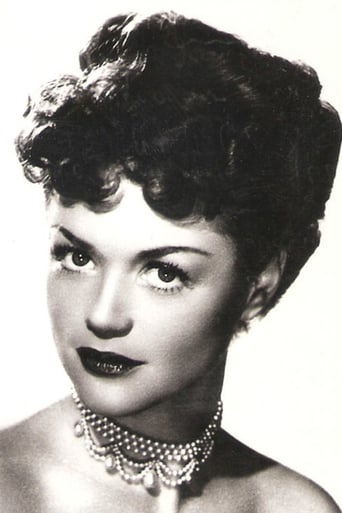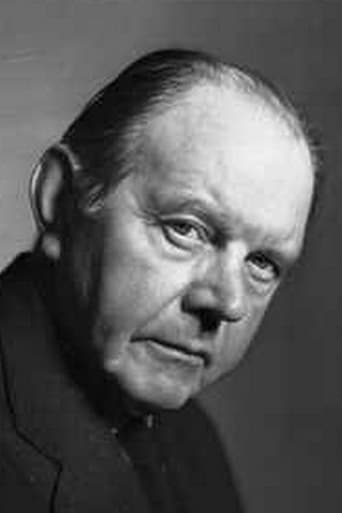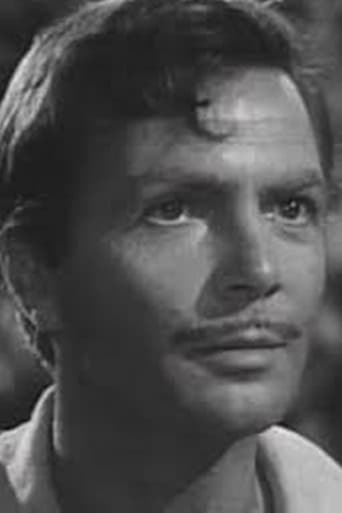Konterr
Brilliant and touching
TaryBiggBall
It was OK. I don't see why everyone loves it so much. It wasn't very smart or deep or well-directed.
Rosie Searle
It's the kind of movie you'll want to see a second time with someone who hasn't seen it yet, to remember what it was like to watch it for the first time.
Kinley
This movie feels like it was made purely to piss off people who want good shows
kijii
A few weeks ago, I reviewed Marcel Carné 1953 film, Thérèse Raquin, based one of Émile Zola's novels. There I said: 'Zola, like his naturalistic literary contemporaries--Jack London, Stephen Crane, and Frank Norris--saw man as a brute guided by naturalistic (social or environmental) forces beyond his power or control.' YET, this Renoir film, based on another Zola novel (part of the 20-novel Rougon-Macquart series), comes even closer to representing the naturalistic literary movement at the turn of the century, and I would place it high among Renoir's other famous French films of the 30s..As the film opens, we see an engineer and his stoker maneuvering their fast train down the tracks and into Le Havre. The opening scenes show the tracks, tunnels, and bridges from an engineer's viewpoint and are some of the most impressive dynamic perspective shots ever seen on film.After the train arrives at Le Havre, the engineer, Jacques Lantier (Jean Gabin) and his stoker, Pecqueux (Julien Carette), examine the engine and notice that a main axle is broken and has to be repaired. The repairs will take 36 hours, so Jacques decides to visit his godmother near Le Havre. During his visit, we learn that he has had trouble with attacks involving sudden headaches, rage, and depression. He blames these attacks on the poisonous alcoholic debauchery that he inherited from his father and grandfather. When he finds an old girlfriend, Flore (Blanchette Brunoy), in the country, he attempts to make love to her on a hill by the train tracks. As he does this, he almost strangles her to death. But, he is suddenly stopped by a rapidly passing locomotive, which presumably brings him out of the blackout phase of one of his attacks. Flore, familiar with his condition, asks him if his behavior is the result of his problem. He tells her that his violent urges are beyond his control, again blaming it the hereditary poison that flows though his veins. Though Flore tells him she wants to marry him, he leaves her. In the meantime, the film follows the problems of Le Havre's stationmaster, Roudaud (Fernand Ledoux), who had taken a formal complaint from one the passengers on his train even though the complaint was lodged against a VIP of the railroad and it could cost him his job. When he goes home to his young and much-too-beautiful wife, Séverine (Simone Simon), he asks her to travel to Paris with him and take the problem to her influential godfather, Grandmorin (Jacques Berlioz). She does this successfully. But, then Roudaud starts to question Séverine's relationship with him. His first thought is that she might be Grandmorin's daughter since her mother had worked for him as a maid at the time when she was born. If so, he thought, they might be coming into his money some day. Séverine seems genuinely shocked at the thought of being Groandmorin's daughter. However, after seeing a ring on Séverine's finger, which Grandmorin had bought her, the conversation between Roudaud and Simon suddenly changes from the thought that she could be his daughter to the accusation that she is his lover. When Roudaud physically confronts her about this, she confesses that she has been his lover. The shame of being cuckolded by Séverine and Grandmorin immediately sets Roudaud's mind on the fact that he must be killed. He forces Simone to write Grandmorin a letter asking him to meet her in his compartment on the train from Paris to Le Havre. When Grandmorin does this, Roudaud and Séverine kill him and leave him in his compartment. Roulaud tells her that the murder will bind the two together forever. After the murder, they see Lantier in the train car's corridor. Fearing he may have witnessed something, Séverine talks to him on the train to deflect any suspicions. When the train is stopped at the station and the body is found, the passengers are questioned about the murder. No one claims to have seen anything. But, during the questioning, the prolonged eye contact between Séverine and Lantier makes her suspicious that he knows something that he isn't telling. She then seduces Lantier so that if he knows anything he won't tell anyone. Even though Lantier and Séverine have a sexual liaison in a railroad shed and they both proclaim their love for each other, neither can ultimately commit to loving each other, either because of a painfully abusive childhood (Séverine) or an indefinable inherited brutality (Lantier). Although the debate of nature versus nurture on child development still continues today, it is not as dominant in discussions now as it was in the late 19th Century.
morrison-dylan-fan
Nearing the end of my French viewing marathon,I realised that I have never seen a film from one of the most legendary French directors: Jean Renoir. Looking at Renoir DVDs on Amazon,I found out that Fritz Lang's Film Noir Human Desire (which I own,but have yet to see) was a remake of a Renoir (who has "Noir" in his name!) movie,which led to me getting set for my first Renoir viewing.The plot:Running a train between Paris and Le Havre, Jacques Lantier tries to stay on his own,due to going into a murderous rage for any women he falls in love with (what a romantic!) Despite his best efforts,Lantier is unable to take his eyes off the deputy station masters wife: Séverine Roubaud. Learning that she has had an affair with a rich guy called Grandmorin, Séverine's husband gets her to arrange a meeting on a train.Pulling Séverine along,Roubaud covers the windows and kills Grandmorin. Witnessing the murder,Lantier discovers that he is unable to overcome his human desire for Séverine.View on the film:Starring in the first of his two Film Noirs to get remade in the US, (the other being the soon to be banned Le Jour se Leve,remade as The Long Night) Jean Gabin gives a towering,simmering with anger Film Noir loner performance as Jacques Lantier. Covered with coal from the train,Gabin coils Lantier tightly up and keeps an intense evil under the surface aura bubbling away,which Gabin gradually cracks to cover the coal in blood.Looking like one of the cat people whose got the cream,the sexy Simone Simon give a seductive performance as Femme Fatale Séverine Roubaud. Catching the stray light in her black coat,Simon brilliantly digs her nails into the psychological trauma of Roubaud,whose delicious,double crossing Femme Fatale sting Simon gracefully carries with an air of impending doom. Caught between Lantier and Séverine, (plus a Jacques Becker cameo) Fernand Ledoux gives a hard-nosed performance as Mr. Roubaud,whose restless use of force to get his way,Ledoux wonderfully turns into Roubaud seeing the Film Noir darkness in a watch.Putting Émile Zola's 1890 novel on Film Noir tracks,the screenplay by co-star/co-writer (along with Denise Leblond) /director Jean Renoir places Séverine so tantalisingly close to Lantier that his Noir desires reveal themselves in the rawest form possible. Hitting the acts of violence with a blunt force,the writers superbly opens up the brittle veins of the Roubaud's and Lantier,where every suspicion Lantier gains on the mystery of the murder,brings the viper charms of Lantier and Séverine burning across the screen.Rubbing the charcoal pessimism on Lantier's face,director Renoir & cinematographer Curt Courant give their doom-laded train ride an extraordinary, reflective Film Noir atmosphere,by turning the camera to look at the mirrors of poisonous human desire seeping out of the seams. Entwining Lantier and Séverine in an ultra-stylised Noir embrace,Renoir drives the title with a magnificent Film Noir atmosphere, threading the fractured romance between the Roubaud's and Lantier with merciless lines of shadows uncovering Lantier's human desire.
ackstasis
Well, I'll be damned – it seems that the French did invent film noir, after all! In Jean Renoir's 'The Human Beast (1938),' the noir mould, thematically if not stylistically, is virtually complete. When a husband and wife (Fernand Ledoux and Simone Simon) murder the wife's wealthy lover, one witness – Jacques Lantier (Jean Gabin), a mentally-unstable railway driver – threatens to expose their secret. To protect herself, the wife quickly seduces Lantier, and attempts to maneuver him into murdering her abusive and controlling husband. The following year, Renoir produced 'The Rules of the Game (1939)' as a "pleasant" film about a society that he believed had become rotten. There's no such pleasantness to be found in 'The Human Beast,' in which even the prettiest, most innocent-looking woman is capable of evil (in an introduction recorded in 1967, Renoir remarks that he chose Simone Simon for the role precisely because she seemed perfectly innocuous).Simone Simon, gracefully seductive in her natural tongue (as opposed to her stunted English in 'Cat People (1942)'), is a classic femme fatale. Jean Gabin's performance is also good, though his character is afflicted with an unlikely psychological condition: for no sensible reason, Lantier occasionally feels the need to throttle the women in his life, a psychosis that is so poorly explored (beyond vague allusions to a family history of alcoholism) that it serves merely as a clumsy plot device. Throughout the film, Lantier spends large amounts of time with his locomotive "La Lison," which is lovingly photographed in action during a wordless opening sequence. Renoir intended the train to be interpreted as a third party in a twisted love triangle also involving Lantier and Séverine. However, I never really got the sense that the train was a major, animate character; perhaps this was more clearly established in Émile Zola's 1890 novel.
Hitchcoc
There are two powder kegs in this film. The first is Lantier (Gabin) who wells up with violence when in the embrace of women. The second is Sevarin, played by Simone Simon. We can see the convergence of the twain as these two make their respective ways toward each other. Lantier is a railroad engineer and a very competent one. His locomotive is his passion. People are aware that he has an illness which he describes as the result of being the lineage of a host of alcoholics. He is lonely, however, and when he falls for Sevarin he falls for good. She is married and is complicit with her husband in killing a man for whom she was a mistress. Her husband, who also is a railroad man, feels he needs to kill him in order to restore his own honor. Lantier is a witness after the fact and this is when he connects with Sevarin. The romance is very passionate, but she needs him to kill her husband. He is not a conscious killer and can't do the job. This complicates everything and ruins Lantier's life. This is a simple tale that is complicated by the nature of the triangle. Renoir does some wonderful things with the camera and sets it all up very well.





